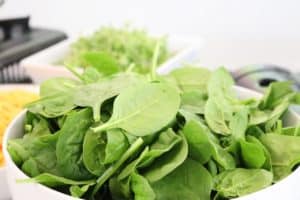
At a very early age, society, advertising, and popular culture start instructing which foods are a treat and which aren’t a treat. I remember Saturday morning cartoons glorifying cupcakes, cheeseburgers, doughnuts and candy while vilifying vegetables, fish, liver and cottage cheese. It’s insidious the way they programmed us to believe that a doughnut is a treat and it should be gobbled up the moment it presents itself but we should only eat spinach if we are forced to by an authority figure (mom or a doctor).
But the great thing about becoming an adult is that we have the free will to actually test these societal assumptions and make up our own minds. If – and that is a big IF – we take the time to do so. And that is the key right there.
Here is an experiment: the next time a coworker brings in a box of some type of sugared-dough or other, watch as everyone devours them. Are they even tasting anything? Does anyone savour their treat? Or are they simply reacting to some ancient programming that tells us: sugar + dough = yum.
But does it? Really? Every single time?
It may seem like I am picking on doughnuts here (and I am) because I personally had a revelation a few years ago that most doughnuts actually suck. And on top of that, they give me a bit of a stomach ache and, after the brief sugar rush, make my energy levels plummet for the rest of the day.
After I tested the theory a few more times and decided I was right, I stopped eating the doughnuts that were brought into the office (nearly) every Friday. In fact, I became known as “the guy who doesn’t like doughnuts” around the office. A badge of honour and pride that was envied by many of my coworkers who had decided years ago that they were powerless to resist the sugar-dough combo in any form. It appeared to them that I had some superpower. But in reality, I had just taken time to test the theory that these so-called treats were actually a treat to me.
They weren’t.
And with that new knowledge, I didn’t have to use any willpower, motivation or superpower to say “no thanks” to them. I honestly did not want them or the repercussions they brought with them. And I am not even talking about calories here.
After that, I started testing other so-called treats and sure, a few of them are still on my list (I am a sucker for whipped cream) but many others went the way of the doughnut. And on the flip side, I realized that grabbing a bowl of spinach to eat popcorn-style was something I really enjoyed.
- Cupcakes – nope.
- Hard Candy – never.
- Pie (most fruit) – yup!
- Brussel Sprouts – yes, please!
- Cottage Cheese (with ground pepper & diced carrots) – hell yeah!
- French Fries – hard pass (I know, right?!?)
The challenge!
This is something we do in the Weighless Program: we challenge our members to take the time to actually taste their food, fully experience it – in the moment and also for the few hours after – and make up their mind for themselves. Treat or not?
You may find that birthday cake holds no allure but a stalk of rhubarb does. Those generic cookies you buy in a box from a little girl in a funky outfit are flavourless and pasty while the cookies made by your mother-in-law are totally worth it. Just because the words “burger and fries” are often said together that doesn’t make them a must-have combo, if you don’t actually enjoy the fries.
What is a treat to you and only you? You independent and discerning individual?

 Time is tight during the holidays, and that may mean that you really do not have time to do your regular exercise minute routine.
Time is tight during the holidays, and that may mean that you really do not have time to do your regular exercise minute routine.